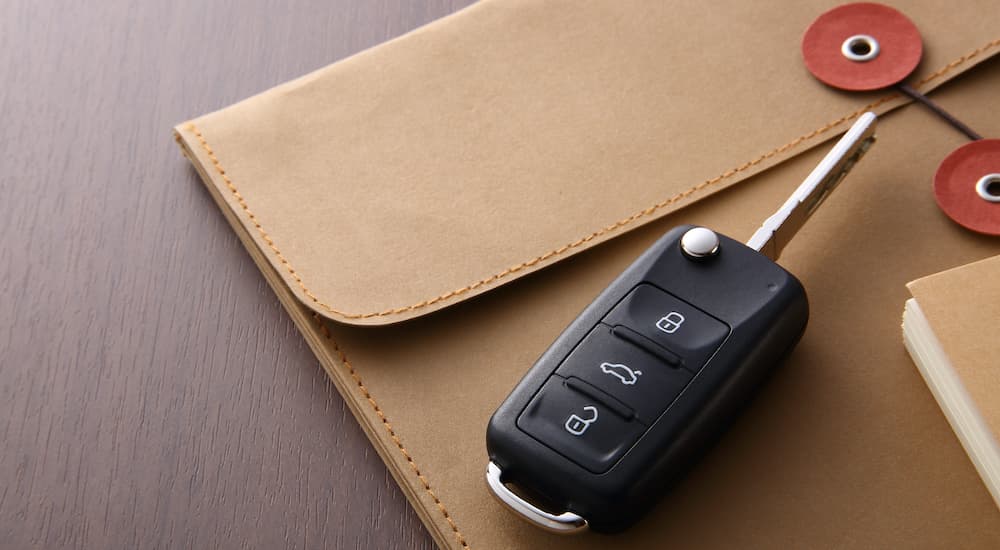Accidentally underpricing an old blender or box fan that you’re trying to sell won’t make or break your bank account. It’s annoying to realize later that you could have gotten more for such items, but it isn’t devastating. Realizing that you could have asked for more money for your old car is a big deal. You might be talking about several hundred or even several thousand dollars that could have gone in your pocket that you left on the table. If you’ve been thinking, “It’s time to sell my car,” then the first thing you need to know is exactly how much it’s worth.
In addition to asking for too little for a car, asking too much for it is also a risk. You could put up advertisements all over town and hear nothing but crickets coming from your phone if you’ve asked for too much for it. Meanwhile, all of that time, your car’s value is depreciating. Determining the real value of your car in a timely manner is very important when you’re ready to sell it. So we’ve listed some ways to find out just what your car is worth.
Market Value vs Book Value
Before even diving into where and how to find the value of your car, you need to know about two types of values that will come up: market value and book value. The book value is the figure used by official agencies like your insurance agency, a car finance institution, or professionals in the automotive world. It’s a very bare-bones, just-the-facts number. The market value is what the market is currently willing to pay for your vehicle. These numbers can be vastly different, and not realizing that can lead to heartache or mistakes.
The most valuable piece of data for you is the market value of your car. The book value might just be $8,000, but a deeper look could show you that local buyers have been paying twice that for your vehicle. On the flip side, the book value could be high, but unfortunately, you might find that your car isn’t getting much on the market.
The market has a mind of its own, and many factors determine that number––very different factors than those that play into book value. You can use real estate as a good comparison. A two-bedroom, two-bathroom condo built in the year 2000 that is 1,200 square feet should have the same value anywhere. But we all know that isn’t true. It can go for $1 million in some places and at certain times or for just $300,00 in other places and at other times. That’s because the market changes based on location, time, and many other factors. The same goes for cars.

Online Tools
There are multiple online tools that can help you get a pretty accurate assessment of your vehicle’s value. Each operates slightly differently from the rest, so it’s important to ask yourself what your potential buyers will want to know. In the end, there is no wrong or right tool to use. Which one you go with will depend on your plan for the vehicle and your desired customer. It can be a good idea to get an estimate on multiple online tools to get a general sense of what the car can go for.
Kelley Blue Book (KBB)
Kelley Blue Book is a well-respected institution and, to many professionals and consumers, the final authority on car values. It collects some simple details like the make, model, and year of your car, along with the color and whether you have any special equipment or standard equipment. It also lets you see cars for sale in real-time to get a sense of what things are going for. However, the information Kelley Blue Book asks for about your car is limited compared to some other tools. That being said, once it’s done gathering your data, it will offer to show you the offers you could get in a trade-in deal or through private sales, and even what cash offer a local dealership would make for the car.
National Automobile Dealer’s Association (NADA)
NADA is going to take a similar approach to assess the value of your vehicle. In addition to the information KBB gathers like make, model, color, and things like that, it also takes into consideration both wholesale price, market price, and the demand for the car in your area. So taking into account both NADA and KBB is going to show you more useful and real-time information on what you could get for your car where you live.
Edmunds
Edmunds is considered a competitor of Kelley Blue Book. What a lot of drivers like about Edmunds is that it collects information that gives a very comprehensive look at the health and history of a vehicle. In addition to the standard info that other online tools collect, it also asks about things like accident history, flood damage, whether the car was smoked in, cosmetic damage, mechanical warning lights, inoperable internal parts like door handles, and more. If you are going for a private sale, Edmunds could be the tool to use. Individual buyers like to know exactly which repairs (if any) need to be made and what that will cost them. They don’t have the full team of a service department at their disposal the way a dealership does, so they want that nitty-gritty information.

Look at Cars for Sale in Your Area
It won’t hurt to do some armchair detective work and just poke around online. If you are selling privately, look at sites like Craigslist or Nextdoor to see if anyone is selling a similar car. You can look at several cars in the same categories, such as 2018 sedans with 30,000 miles on them. The more information you can have in your back pocket, the better. Buyers will have done their research, so you need to be ready to respond to what they know (and call it out when they’re bluffing). If you are trading it in at a dealer, then see how they are pricing their inventory. Don’t expect to get the full value that they will sell your car for (they have to make a profit somehow), but make sure you get what your car is worth.
Don’t Forget Dealership Specials
If you plan on buying a new car of the same make right after selling your old one, it’s always worth it to look into dealership specials. If you’re selling a Nissan to buy a Nissan, for example, see what a local Nissan dealership will offer you. Some dealerships and brands offer trade-in specials and loyalty discounts, knocking some dollars off of the MSRP of a new car if you trade in an old one or giving you a cash bonus towards a purchase if you trade in your vehicle. Most states also allow dealerships to deduct the value of your trade-in when calculating sales tax on your new car, potentially saving you a tidy sum. Going this route also saves you the hassle of selling your car yourself. Dealerships will handle most of the paperwork for you and even do an in-depth inspection of your vehicle to get it ready for sale.
Knowledge Is Power
Ultimately, the more you know, the better chance you have of getting a great price for your used car. Use several online tools. Do some of your own research to see what cars are selling for in your neighborhood. Do some research to see if there’s any special feature in your vehicle that’s in high demand right now. Maybe you’ll find that if you go one town over, you’ll get higher bids for it. Perhaps you’ll learn that your car is selling for far below book value right now, and it’s worth waiting to see if the price can go up. Gathering as much information as possible will make you feel confident that when you do finally decide to sell your car, you’ll get the money you deserve for it.



